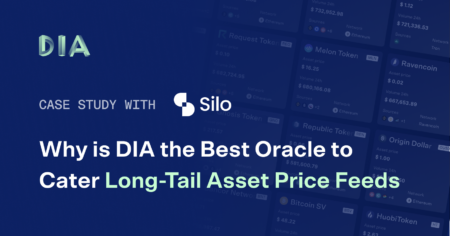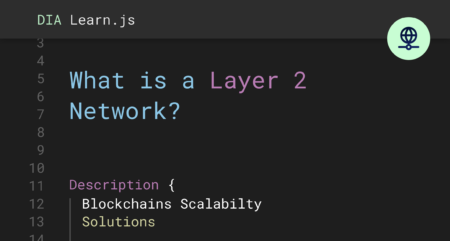What is DeFi: A Guide to Decentralized Finance
A concise introduction to DeFi’s intricacies and potential. Discover the basics, its innovative features, and its role in shaping the future of finance.

What is DeFi and how does it differ from traditional finance?
DeFi, short for Decentralized Finance, refers to the financial systems and tools built on blockchain platforms, primarily Ethereum. It promises to democratize finance by eliminating intermediaries, granting users full control over their assets.
- Decentralization: Unlike traditional finance, DeFi operates on decentralized networks. While banks and financial institutions centrally govern traditional finances, DeFi relies on smart contracts on blockchains.
- Accessibility: DeFi is open to anyone with an internet connection. Traditional banking systems may exclude certain demographics, but with DeFi, users anywhere can access financial services without gatekeepers.
- Transparency: All transactions in DeFi are recorded on public ledgers. This contrasts with the opaque nature of many traditional financial operations.
- Interoperability: DeFi protocols can be integrated and work together, enabling a composable financial ecosystem.
- Custody: Users maintain control over their assets in DeFi, unlike traditional finance where banks or institutions typically have custody.
- Programmability: The backbone of DeFi is programmable smart contracts. This flexibility allows developers to create complex financial instruments and services.
- Efficiency: Without middlemen, DeFi often results in faster and cheaper transactions. Traditional financial transactions may involve multiple intermediaries, each adding their fees and delays.
- Earnings Potential: The decentralized nature of DeFi can offer lucrative opportunities, such as yield farming, which are not always present in traditional systems.
- Innovation Speed: Due to its open-source nature, DeFi evolves rapidly, leading to quick innovations and solutions to users’ needs.
- Challenges: While DeFi has many advantages, it also faces issues such as smart contract vulnerabilities and scaling challenges. Traditional finance, with its established infrastructure, doesn’t face these growing pains.
DeFi Use Cases and Leading Applications
Lending Platforms:
Decentralized lending platforms are the backbone of the DeFi ecosystem. They allow users to earn interest on their assets or take out loans against their crypto collateral, bypassing traditional intermediaries.
- Aave: Originally starting as ETHLend, Aave has evolved to be one of the premier DeFi lending protocols. Not only does it support multiple assets, but it also introduced innovative features such as “flash loans” which allow borrowing without collateral for short durations.
- Compound: As another forerunner in the DeFi space, Compound offers a transparent, open-source platform for users to borrow or lend selected cryptocurrencies. The protocol issues its native
cTokens, representing the staked asset and accrued interest.
Derivatives:
Decentralized derivatives aim to provide financial instruments that derive their value from an underlying asset without relying on centralized entities.
- GMX: GMX is a decentralized spot and perpetual exchange that supports low swap fees and low price impact trades. Trading is supported by unique multi-asset pools that earns liquidity providers fees from market making, swap fees and leverage trading.
- dYdX: dYdX offers advanced financial tools, facilitating margin trading and derivatives on its decentralized platform, providing users with a transparent and trustless way to trade.
Stablecoins:
Stablecoins have been crucial in reducing crypto’s infamous volatility, and their decentralized counterparts are making waves in the DeFi space.
- DAI: Unlike many stablecoins that claim a 1:1 peg with the US dollar through centralized reserves, DAI achieves stability through a system of collateralized debt positions (CDPs), ensuring that each DAI is backed by excess Ethereum collateral.
- USDC: A collaboration between Circle and Coinbase, USDC stands out for its commitment to full reserves, monthly transparency audits, and regulatory compliance, making it a favored stablecoin for many DeFi platforms.
Decentralized Exchanges (DEXs):
DEXs have revolutionized trading by eliminating middlemen, allowing direct peer-to-peer trades on-chain.
- Uniswap: As a fully decentralized protocol for automated liquidity provision on Ethereum, Uniswap has set the standard for DEXs. Its unique automated market maker (AMM) system ensures liquidity while allowing anyone to become a market maker.
- SushiSwap: An evolution of Uniswap, SushiSwap retains the core AMM model while introducing additional features and a more community-driven approach, which has earned it a significant place in the DeFi ecosystem.
Synthetic Assets:
Synthetic assets in the DeFi realm allow for exposure to real-world assets without owning the actual asset, opening up a world of possibilities for global traders.
- Synthetix: Pioneering the space of synthetic assets in DeFi, Synthetix enables users to mint, trade, and burn synthetic versions of real-world assets, from cryptocurrencies to commodities, all backed by its native token, SNX.
- Mirror Protocol: Built on the Terra blockchain, Mirror enables the creation of mirrored assets (mAssets) that mimic the price behavior of real-world assets, thus democratizing access to investments worldwide.
Real-World Assets:
The tokenization of tangible assets is bridging the gap between the physical and digital realms.
- Myco: Myco’s platform for asset tokenization makes it feasible to represent tangible assets on the blockchain, allowing for new trading and investment opportunities.
- Centrifuge: By transforming real-world assets into decentralized financial collateral, Centrifuge is pushing the boundaries of what’s possible in DeFi, ensuring even non-crypto assets can benefit from the DeFi revolution.
How do DeFi loans and lending platforms operate?
DeFi lending platforms have revolutionized the borrowing and lending sectors, making them more accessible and efficient.
- Collateralized Loans: Most DeFi loans require collateral, often exceeding the loan amount, to mitigate the risk of default.
- Interest Rates: DeFi platforms use algorithms to determine dynamic interest rates based on supply and demand.
- No Credit Checks: Unlike traditional systems, DeFi platforms don’t require credit history checks. The over-collateralized nature of loans mitigates default risks.
- Liquidity Pools: Lenders deposit their funds into liquidity pools from which borrowers can take loans. This model contrasts with the traditional peer-to-peer lending.
- Liquidations: If a borrower’s collateral value falls below a specified threshold, the platform can automatically liquidate assets to ensure the loan’s safety.
- Flash Loans: Unique to DeFi, these are uncollateralized loans taken and repaid within one single transaction. They’re utilized for arbitrage opportunities.
- Earn Interest: By supplying assets to DeFi lending platforms, users can earn interest on their deposits.
- Decentralized Governance: Token holders often have the power to propose and vote on platform changes, including interest rate adjustments.
- Interoperability: DeFi lending protocols can be integrated with other DeFi tools, enabling features like automated yield farming.
- Expansion Beyond Ethereum: While Ethereum pioneered DeFi lending, other blockchains like Binance Smart Chain and Polkadot are introducing their lending platforms.
How do decentralized exchanges (DEXs) function within the DeFi landscape?
Decentralized exchanges have transformed the trading landscape, providing a trustless environment for asset exchange.
- Peer-to-Peer Trading: Unlike centralized exchanges, DEXs facilitate direct trades between users, eliminating intermediaries.
- Automated Market Makers (AMMs): Platforms like Uniswap use AMMs, where liquidity pools replace traditional order books, determining asset prices algorithmically.
- Security: Since users retain custody of their funds, the risk of exchange hacks or insider threats is minimized.
- Liquidity Providers: Users can deposit assets into liquidity pools, earning trading fees in return.
- Gas Fees: DEX transactions involve gas fees. It’s essential to factor these costs, especially during network congestion.
- Cross-Chain Swaps: Advanced DEXs are beginning to offer cross-chain trading, allowing assets to be swapped between different blockchains.
- Interoperability: DEXs can seamlessly integrate with other DeFi protocols, enhancing composability in the DeFi ecosystem.
- No KYC/AML: Most DEXs don’t require Know Your Customer (KYC) or Anti-Money Laundering (AML) verifications, ensuring privacy but also posing regulatory challenges.
- Slippage: On DEXs, especially those with low liquidity, large trades can cause significant price changes, known as slippage.
- Future Developments: With Layer 2 solutions and other scaling technologies, DEXs are evolving to offer faster and cheaper trades.
What is the role of governance tokens in DeFi platforms?
Governance tokens play a pivotal role in the DeFi ecosystem, allowing for decentralized decision-making.
- Decentralized Governance: Governance tokens let holders propose, discuss, and vote on changes to the platform, ensuring community-driven evolution.
- Financial Incentives: These tokens often come with financial benefits. Holding or staking them might earn users additional tokens or a share of the platform’s revenue.
- Protocol Changes: Token holders can vote on significant protocol changes, like modifying interest rates, fee structures, or even code upgrades.
- Liquidity Mining: Many platforms distribute governance tokens as rewards to users who provide liquidity, a concept known as liquidity mining.
- Delegated Voting: If token holders don’t wish to participate directly, they can delegate their voting power to someone they trust.
- Token Distribution: Fair distribution of governance tokens is crucial to avoid centralization. The wider the distribution, the more decentralized the decision-making.
- Economic Alignment: Governance tokens align the incentives of the platform’s users, developers, and stakeholders, ensuring everyone works towards the protocol’s success.
- Treasury Management: Some governance tokens grant the community control over the protocol’s treasury, deciding how funds are allocated or spent.
- Value Accrual: As the platform grows and becomes more successful, the value of the governance token can increase, benefiting long-term holders.
- Guard Against Centralization: Ensuring that no single entity holds a majority of governance tokens is vital to maintain decentralization and prevent unilateral decision-making.
What risks are associated with DeFi investments?
DeFi offers a myriad of opportunities, but it’s essential to be aware of the associated risks.
- Smart Contract Flaws: Being software-based, smart contracts can have bugs. If exploited, these bugs can lead to substantial financial losses.
- Impermanent Loss: This is specific to liquidity providers in AMMs (Automated Market Makers). If the price of tokens inside a pool changes, it can lead to losses when compared to just holding the tokens.
- Liquidity Risk: If there’s insufficient liquidity in a DeFi protocol, users might face challenges withdrawing or trading their assets.
- Regulatory Risks: Governments could enforce regulations impacting the operation or adoption of DeFi platforms.
- Rug Pulls: This term refers to malicious actions by developers or insiders, where they drain the funds from a DeFi project and disappear.
- Oracles: DeFi protocols often rely on oracles for price information. If manipulated, they can cause adverse effects on the DeFi platforms they serve.
- Lack of Insurance: Unlike traditional banks, many DeFi protocols aren’t insured. Though some insurance platforms are emerging, coverage isn’t universal.
- Sybil Attacks: Bad actors can create numerous fake accounts to exploit a DeFi system.
- High Gas Fees: Particularly on the Ethereum network, transaction fees can skyrocket during high demand, making DeFi operations pricey.
- Complexity: The DeFi space is intricate. A lack of understanding or a wrong move can lead to significant losses.
How does DeFi impact the broader global financial system?
DeFi’s rise represents a seismic shift in the world of finance, challenging traditional norms and structures.
- Financial Inclusion: DeFi opens up financial services to anyone with internet access, breaking down barriers present in traditional banking systems.
- Cost Reduction: By eliminating intermediaries, DeFi can significantly reduce transaction fees and other costs associated with financial services.
- Innovation Boost: DeFi’s open-source and composable nature has led to rapid innovation, introducing financial instruments and services previously unimagined.
- Regulatory Challenges: The decentralized and permissionless nature of DeFi poses new challenges for regulators and policymakers worldwide.
- Interoperability: DeFi’s ability to integrate seamlessly with various protocols can lead to a more interconnected and efficient financial ecosystem.
- Market Efficiency: The 24/7 nature of DeFi markets, combined with global participation, can lead to more efficient price discovery.
- Threat to Traditional Institutions: As DeFi grows, traditional banks and financial institutions might need to adapt or risk becoming obsolete.
- Economic Models: DeFi introduces novel economic models and incentive structures, reshaping how we think about finance.
- Transparency and Trust: With all transactions on public ledgers, DeFi can usher in an era of increased transparency and trust in financial dealings.
- Global Economic Shift: As DeFi adoption grows, it has the potential to redistribute economic power, lessening the dominance of traditional financial hubs







